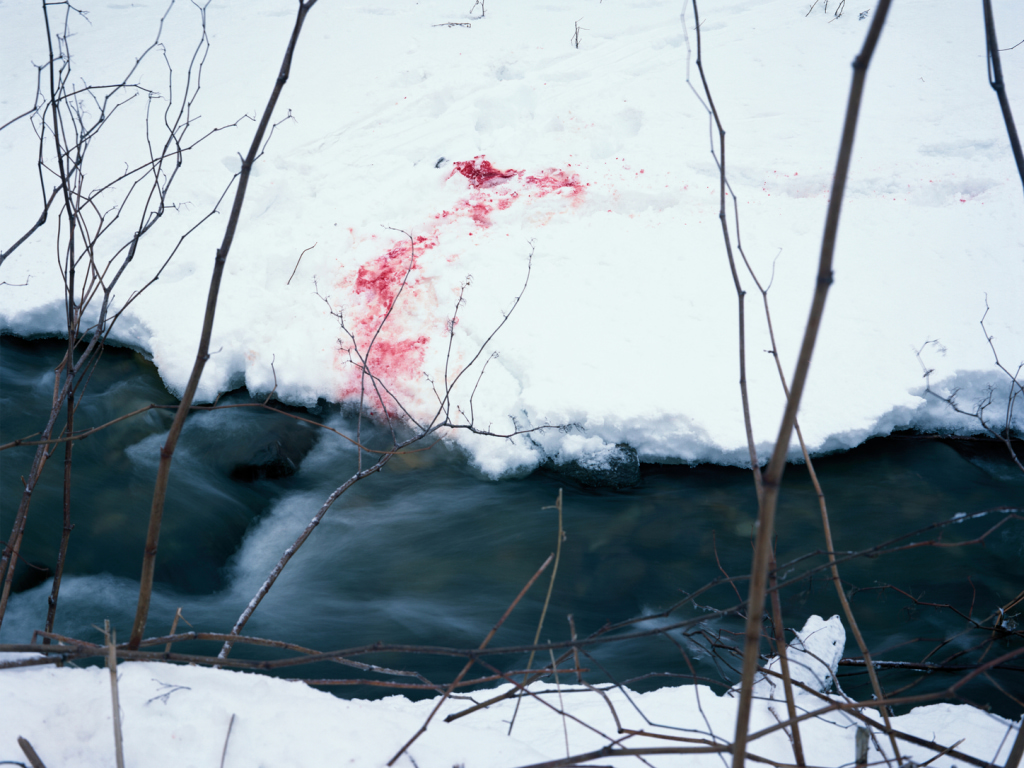Blood splatters across pristine white snow. Broken twigs and branches are scattered in a cold deserted woodland. These descriptions most likely conjure up a scene of mysterious violence, perhaps stills from an eerie horror movie or a police crime scene evidence. In fact, the images in Takashi Homma’s “Trails” photo series, while certainly mysterious, are far from what you might first imagine them to be.
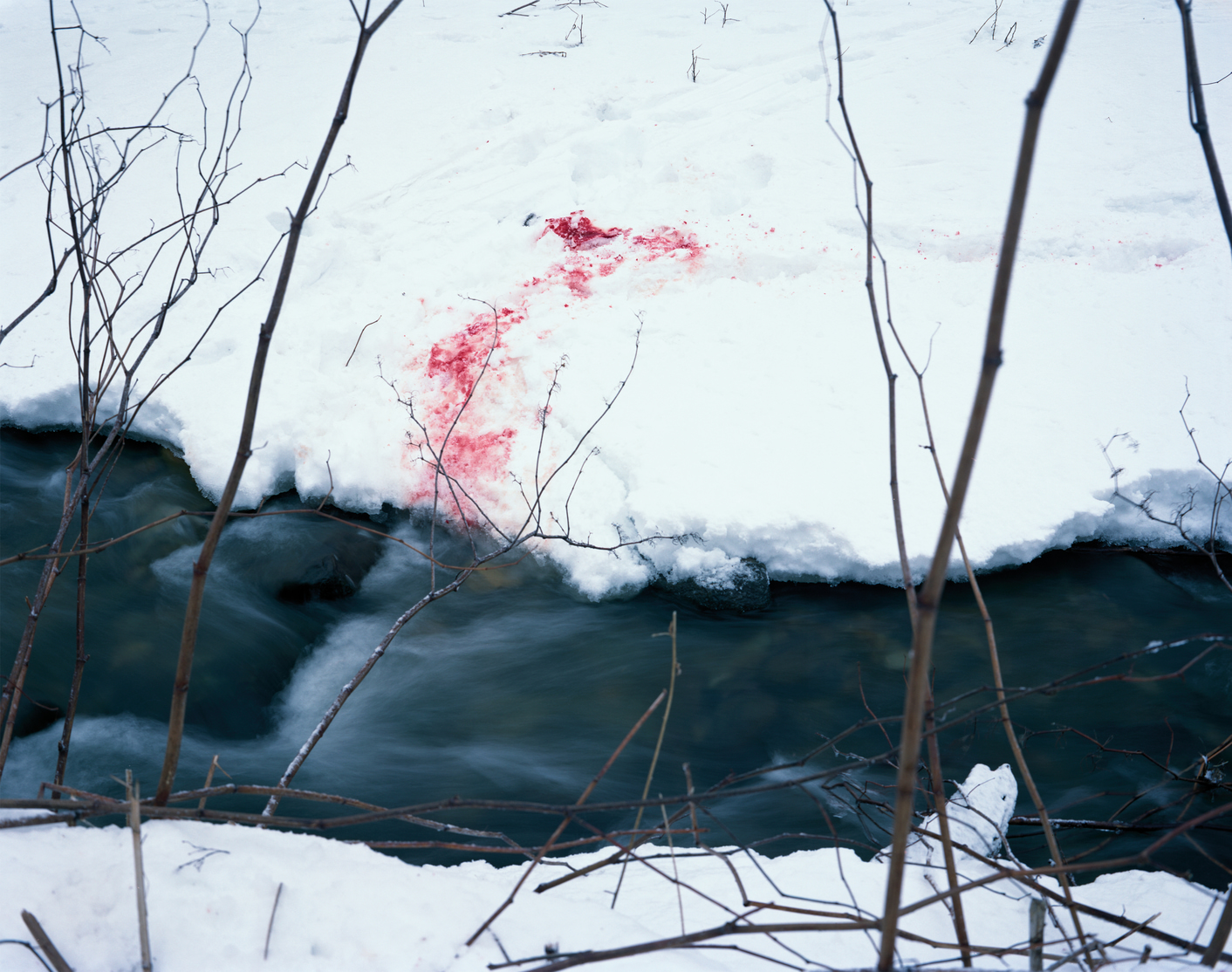
In April, London-based publisher Mack released a new book compiling photographs and paintings from the celebrated Japanese photographer, shot over a nine-year period between 2009 and 2018, during the artist’s winter visits to the remote Shiretoko National Park on the northeastern peninsula of Hokkaido. In recent decades the parkland has become overpopulated by Sika deer. This has had damaging effects on the environment and resulted in a controversial cull, which has encouraged hunters to take matters into their own hands. After many years of protection, the enforced “deer management plan” now permits game hunting of an animal that has been historically regarded by many as a sacred creature.
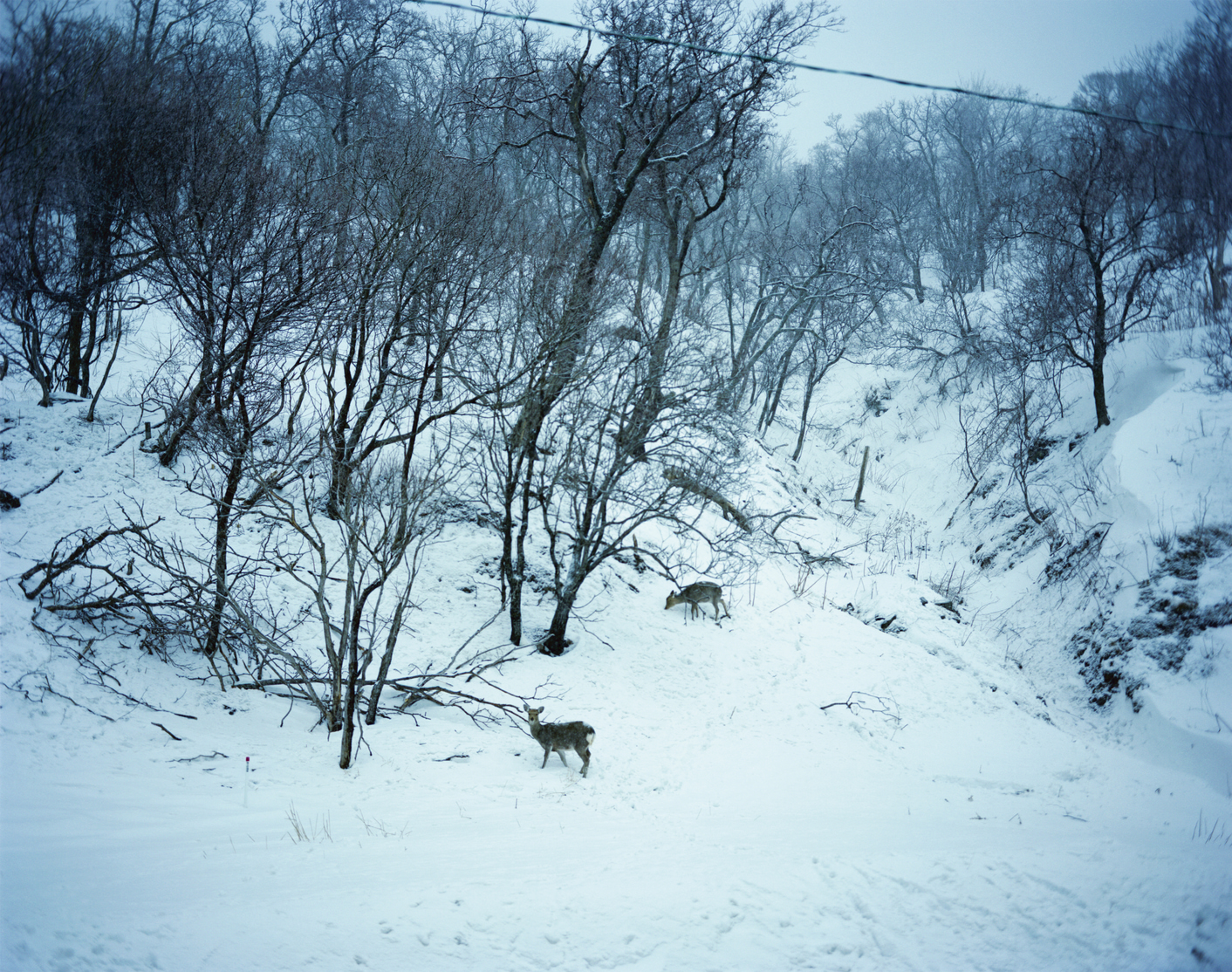
Takashi Homma’s photographs rarely offer a sentimental or emotional point of view, staying true to the contemporary “new documentary” style for which he has become known. There is a distance that remains between the photographer and the subject, regardless of whether shooting in nature or the urban landscapes and city subjects with which he frequently deals.
Born in Tokyo, the 57-year-old Homma has released more than half a dozen publications focusing on the metropolis alone, with subjects ranging from its inhabitants to its sprawling buildings. In recent years, his projects have shown an exploration of more exotic territories and an unraveling interest in nature and wildlife, such as an ongoing series of seascapes entitled “New Waves,” and “Scandinavian Mushroom,” a collection of photographs of mushrooms found in the forests of Fukushima. In Together: Wildlife Corridors in Los Angeles, Homma and American visual artist Mike Mills traced the routes of mountain lions on the periphery of the city, offering a fascinating perspective of the intersection of the suburban and the wild. Spanning across the developed and natural world, Homma presents insightful, aesthetically fascinating images that combine a sense of gritty reality with the abstractness of vivid daydreams.
In the case of “Trails,” it becomes more difficult to separate the artist’s fascination with his environment from the graphic nature of the subject matter. Looking at the images, there is no clear indication as to whether Homma himself has any particular opinion on the issue at the core of the images.
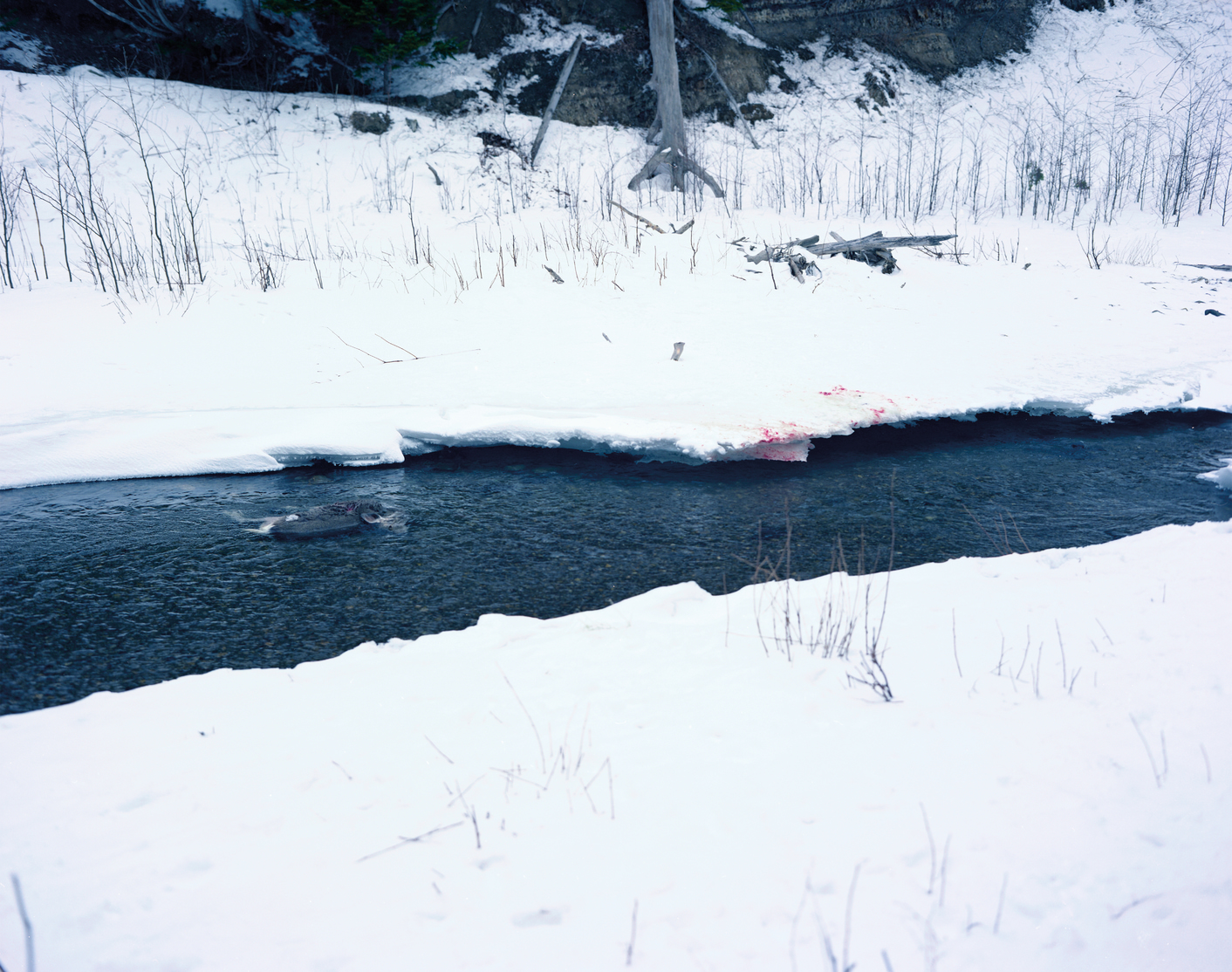
The controversy of the slaughtered deer is far more complex than the ethics of the right to hunt – the cull is aiming to restore the parkland to its natural ecosystem; an attempt by man to take responsibility and restore the law of the land. Japan is facing a nationwide problem regarding its growing deer population. The consequences of centuries of alternating hunting bans and culls have completely disrupted the natural order. While the animals themselves present little danger to humans, they graze on low-growing plants and tree bark, and en masse can completely devastate vast areas of forest and grassland, further destroying natural cycles for other wildlife and harming agriculture.
“The deer population at the national park surged almost 900 percent in a 12-year period”
This is no small problem: according to statistics given in the Bulletin of the Shiretoko Museum in 2016, the deer population at the national park surged almost 900 percent in a 12-year period from just 53 animals counted in 1986 to 500 recorded in 1998. Between 2007 and 2015, 2,700 deer were culled.
Homma’s photographs capture an unflinching glimpse of the residue of the hunt: dark red blood splashed across the immaculate snow, a carcass abandoned in a stream, the birds that feast on leftover remains. But there are also the signs of the deers’ self-detrimental activities: the acres of land decimated by overgrazing, bark stripped bare from tree trunks like flesh being peeled from the bone.
The simplicity of some shots highlight the details of remnants left behind. Sometimes the patterns of red appear like indiscernible calligraphy, and the paintings throughout the book reinforce this symbolism of interwoven colors and textures, where bold marks convey the intertwining blood, snow and tangled twigs. What could easily be seen as gruesome becomes muted by the stillness and serenity of cold blanketing snow. Like a cinematic motif of a snowy slaying in an old samurai movie, the brutal act is diluted by nature, a reminder of the transience of life, or rather the inevitability of death and our inherent connection to the earth. As usual with Homma’s work, the viewer is left to make up our own relationship with the subject and our own connection, be that ethical, emotional or neither.

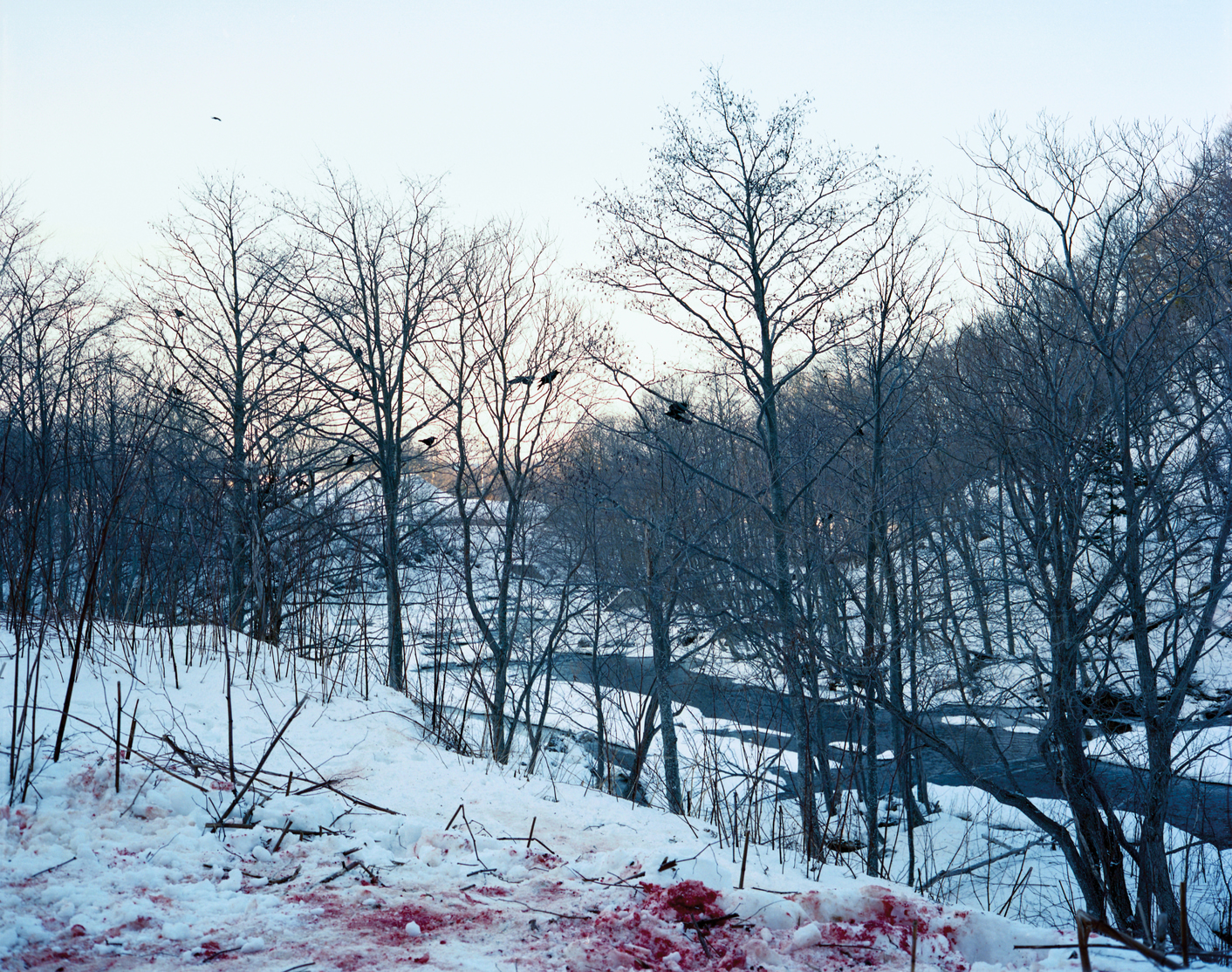
From an animal rights perspective, any cull is inhumane, but in cases where the damage to the landscape and the rising deer population is so detrimental, it seems impossible to fix without some form of intervention. In recent years, even the sacred deer of Nara, a well-known tourist attraction, have had to suffer the consequences of their own legacy spiraling out of control.
However, in the case of Shiretoko, there is another option being suggested by experts, bringing with it its own controversy – the reintroduction of an apex predator, the wolf. Those in opposition fear repopulating the peninsular with wolves would potentially bring yet more danger to a region already dealing with the threat of bears, however the undeniably more natural solution is perhaps the only way to ever completely restore a natural balance untainted by the acts of man.
Visitors continue to trek to the park and the desire to hunt for pleasure or deer meat continues to be in demand. While the cull is currently successful in rejuvenating some of the area’s plants and flora, we can only wonder at the long-term consequences on the turbulent future of the Sika species. It’s rare for photographs to show us something simultaneously unsettling yet poetic, however in the case of “Trails,” the tragic and beautiful duality of life is as clear as red marks on white.
Trails (2019) by Takashi Homma published by MACK is available from www.mackbooks.co.uk and Amazon.

